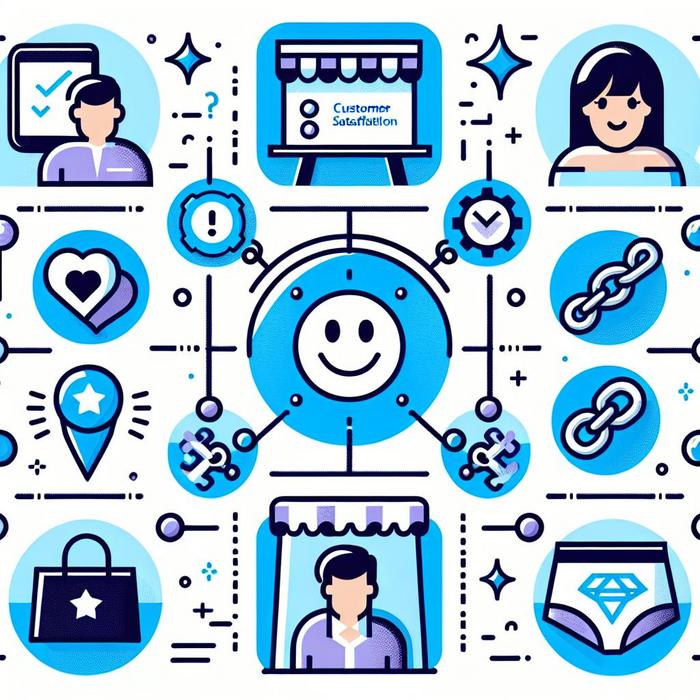Mapping the Path to Superior Customer Satisfaction with Personalization
Are you capitalizing on personalization as a high-ranking executive in order to heighten customer satisfaction? This is an invaluable question every C-Suite leader should ask themselves as they navigate competitive businesses.
Value-based optimization, a critical subset of this personalization strategy, can revolutionize your approach to customer interactions, acquisition, and retention and lead to increased customer satisfaction and life-time value.
Personalization — A Key to Unlocking Customer Satisfaction
Digital innovation has transformed the expectations. As cited by McKinsey, personalized experiences have become the primary driver of consumer decision-making.
The need for personalization has propelled data-driven marketing strategies into the spotlight. CMOs, CFOs, and CEOs are leveraging these strategies to offer tailored experiences, thereby building stronger customer relationships and ensuring customer satisfaction at every interaction.
From Data to Personalization — The Value-Based Optimization Approach
How do you derive actionable insights from customer data and apply it to personalization? The answer lies in value-based optimization.
This approach allows you to target customer acquisition efforts effectively, segment customers based on their potential value, and prioritize those interactions that yield the highest ROI. By utilizing data analytics, value-based optimization delivers content or services that resonate with your customers’ needs, satisfying their wants and needs in a more personalized manner.
The Reward— Enhanced Customer Satisfaction and Retention
Value-based optimization, when executed successfully, can enhance customer relationships and satisfaction. This eventually leads to increased customer retention. The Zendesk blog suggests that satisfied customers are more likely to stick with your brand and even act as brand ambassadors.
Implementing Value-Based Optimization for Personalization
Apart from understanding the strategic importance of value-based optimization, the challenge lies in implementing it effectively. This is where marketing automation comes into the picture.
Successful integration of personalized marketing automation can lead to improved customer satisfaction. An excellent starting point is with Customer Relationship Management (CRM) strategies. These strategies are an integral part of realizing corporate vision and are designed to enhance the customer experience.
A note of caution though. While incorporating value-based optimization and personalization, it is crucial not to overstep the line into the realm of intrusive marketing, which can actually hinder customer satisfaction.
In essence, the goal of every large company is to elevate customer satisfaction. As leaders in a competitive market, understanding the nuances of personalization and value-based optimization can aid in achieving this goal.
Crafting a personalized business strategy through value-based optimization positions your company to deliver what your customers truly desire. This not only promotes customer satisfaction but also fosters loyalty and trust.
The journey towards customer satisfaction doesn’t end here, but rather, it’s an ongoing process that requires constant fine-tuning of strategies. Always remember, at the heart of every successful business is a satisfied customer.
Utilizing Personalization to Skyrocket Customer Satisfaction
Hyper-competitive business environment pushes companies to do more than just offer quality services or products. It’s no longer sufficient to meet customers’ needs; businesses should strive to anticipate and fulfill them even before customers realize it themselves. This has made personalization, a powerful tool for boosting customer satisfaction, is backed by research – highlighting that personalization creates emotional connections with customers, increasing their satisfaction and overall loyalty.
Let us illustrate specific ways in which personalization can enhance customer satisfaction:
Customize Product Recommendations
An excellent personalization strategy involves recommending products based on customers’ past purchases or browsing behaviour. For example, suggesting weather-appropriate clothing based on customers’ locations or recommending related items based on past purchases. This approach mimics the in-store experience where assistants help customers find what they’re looking for, thereby, elevating customer satisfaction levels.
Synchronize Across Channels
Customers interact with brands across various touchpoints – both online and offline. To satisfy customers, businesses need to ensure consistency across all channels, thereby providing a seamless and personalized user experience. Research shows that customers who engage with businesses across multiple touchpoints are more satisfied and tend to spend more.
Enhance Customer Service
Personalization should extend beyond products and include customer service. Tailored customer service involves understanding customer’s unique issues and addressing them efficiently. Timely, personalized responses have a positive influence on customer satisfaction. Indeed, satisfied customers are regular customers who, when delighted, become evangelists for your brand.
Data-Driven Personalization
Companies that successfully implement personalization use a data-driven approach. Leveraging data analytics, predictive modelling, and machine learning algorithms, businesses can glean insights into consumer behaviours, preferences, and needs. With this information, they can craft personalized campaigns and strategies that satisfy customers.
Personalization and Value-based Optimization
The real magic happens when personalization is combined with value-based optimization. Personalization nurtures customer satisfaction, while value-based optimization ensures businesses retain high-value customers, thereby maximizing the customer lifecycle.
Adopting these personalization strategies can redefine customer experiences and lead to higher satisfaction levels. However, personalization is not a one-off affair; it’s an ongoing process that requires constant refinement and optimization. Stay on top by continually analyzing data, discerning customer preferences, and adjusting strategies accordingly.

